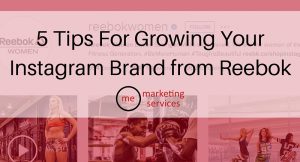If you’re tapping into user-generated content, you need to be cautious with how you interact with your fans, says columnist Jordan Kretchmer. He offers these tips on how to play it safe.

User-generated content is soaring in popularity among both marketers and consumers. But in this golden age of the Selfie Stick, finding and using fan-made content is a lot more complicated than it looks. Get it wrong, and the consequences can range from annoying your Twitter followers to getting sued by them.
So whether you’re trying to inspire more people to participate or just looking to keep yourself out of an orange jumpsuit, here are a few do’s and don’ts that will help you play it safe.
DO Ask For Permission
There are a few ways to do it, and the right way depends on how you’re planning to use the content. Let’s start with approval hashtags, like the one Urban Outfitters is using below.

You probably see these in your own feed all the time, but there are two key things to note. First, the company is clear about how it’ll be using the photos (“We’ll be posting some of our favorite entries throughout the month”).
Second, it’s using a unique hashtag (#UOAroundYou) to ensure the vast majority of content posted with this hashtag relates to this campaign.
Not only does this imply consent on behalf of anyone using the hashtag, but it also makes sorting through the resulting content a lot easier for the brand manager at Urban Outfitters.
Implicit consent works for one-off campaigns like the one above, but if you’re planning to use that content for something else in the future — like a holiday ad campaign, for example — it’s best to explicitly ask for the rights to the photo.
You can just ask them flat out on social media or include it in your submission guidelines if you’re asking people to upload directly onto your site.
…But DON’T Make It Awkward
Unless “creepy” and “intrusive” are included in your brand values, make sure your rights requests on social networks sound casual and authentic. Incorporating small, yet personal touches like a greeting, the person’s name, or a positive signoff can go a long way.
A fun, personal greeting not only gets results, it often engages the person receiving the request, so he or she looks forward to seeing the final product.
The blogger below was so thrilled to be featured on Old Navy’s Instagram page that she posted a screenshot of it on her own Instagram.


Lastly, keep in mind that Twitter and Instagram aren’t one-way messengers — if the people you’re requesting rights from ask a question, respond to them. If they grant you rights, thank them!
DO Request As Someone Recognizable
Make sure any requests come from an account clearly associated with your brand or organization. Anything else will probably seem untrustworthy and risks being ignored by your audience.
Using your personal account or worse, a blank requests-only account, isn’t a good idea.
But DON’T Spam Your Followers
Research shows that “bursts,” or clogging your followers’ timelines with updates, are the number one reason Twitter users unfollow accounts, so always keep the author’s handle at the beginning of your Twitter request messages.
This way, the request is formatted as a reply, meaning your followers won’t see it by default on Twitter. (They can find it only by going directly to your profile and accessing the “Tweets and Replies” view.)

If You Have To Automate, DO Use Multiple Default Messages
Sending out the exact same message to dozens of users isn’t just only inauthentic, it may also trigger your requests to be classified as spam. If you’re working with a huge volume of content and need to automate, limit your risk by creating multiple, varying default messages.
DON’T Act Like A Bot Farm
Sometimes rights requests are incorrectly identified as spam. The exact workings of any social network’s spam-detection algorithms are proprietary and confidential, so while there’s no way to pinpoint exactly what sets each one off, it’s a good idea to keep an eye on the following red flags:
- Behavior that deviates from the norm of your sending account: Think of the way your bank monitors your credit card patterns and blocks accounts when it spots unusual activity.
- Message volume: This depends on account history and profile, like the number of followers or length of history. In other words, bursts of activity on brand-new accounts are likely to be flagged.
- Content of the tweets: This could include repetitive text, URLs, or spammy words and phrases such as “all natural” or “free.” (Hubspot has a pretty extensive list of words to watch out for.)
At the end of the day, it comes down to respect. If you would consider something creepy or spammy, chances are your audience will, too. As with all customer interactions, requesting rights is an opportunity to engage with your fans and build a relationship with them — make it count!
Some opinions expressed in this article may be those of a guest author and not necessarily Marketing Land. Staff authors are listed here.
(Some images used under license from Shutterstock.com.)
Marketing Land – Internet Marketing News, Strategies & Tips
(298)
Report Post






